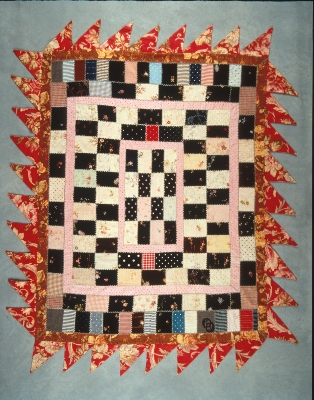Quilt No.768PHM - Powerhouse Museum

1480...
"The maker is unknown but is probably a woman from northern Lancashire. She was about 80 when she made the quilt and gave it to Annie Dixon, who lived in the same area, sometime before 1920. This was said to be her last quilt." [PHM] When Annie died her niece Margaret Juckes inherited the chest and its contents, which were sent to Australia in 1960. The Powerhouse Museum bought the quilt in 1989.
"The quilt was once owned by Annie Elizabeth Dixon, who was born in 1880 and died in 1959/60. She spent her early years at Aynsome Farm (or Mill) near Cartnel in Northern Lancashire, then moved to nearby Kent's Bank. Annie migrated to Canada in 1920, leaving the quilt in England in a chest of things belonging to her. When Annie died her neice Margaret Juckes inherited the chest and its contents, which were sent to Australia in 1960��.." [PHM]
Related Quilts:
1500 x 1200mm
1580 x 1830mm
2439 x 1829mm
2415 x 2110mm
1740 x 1210mm.






